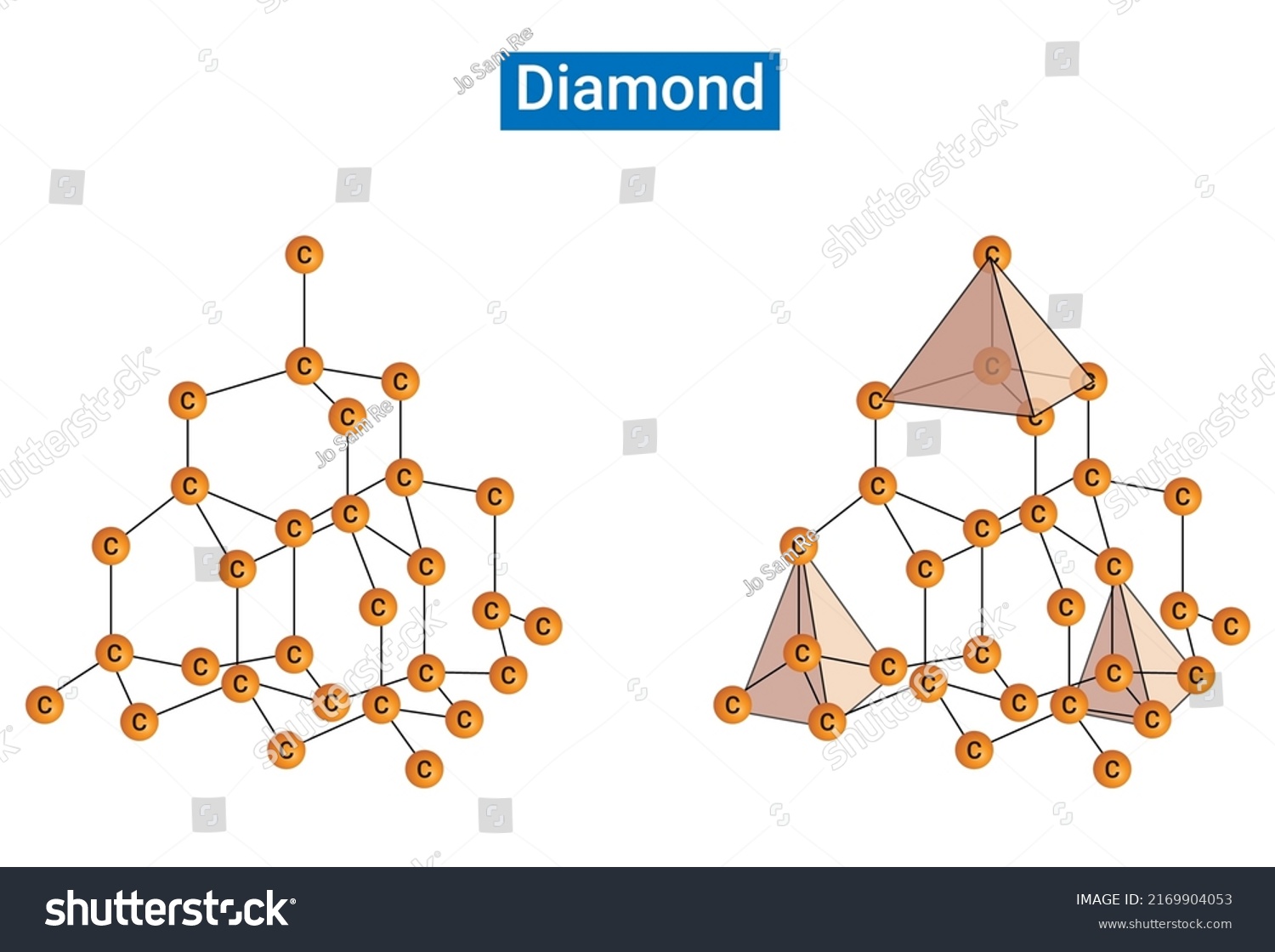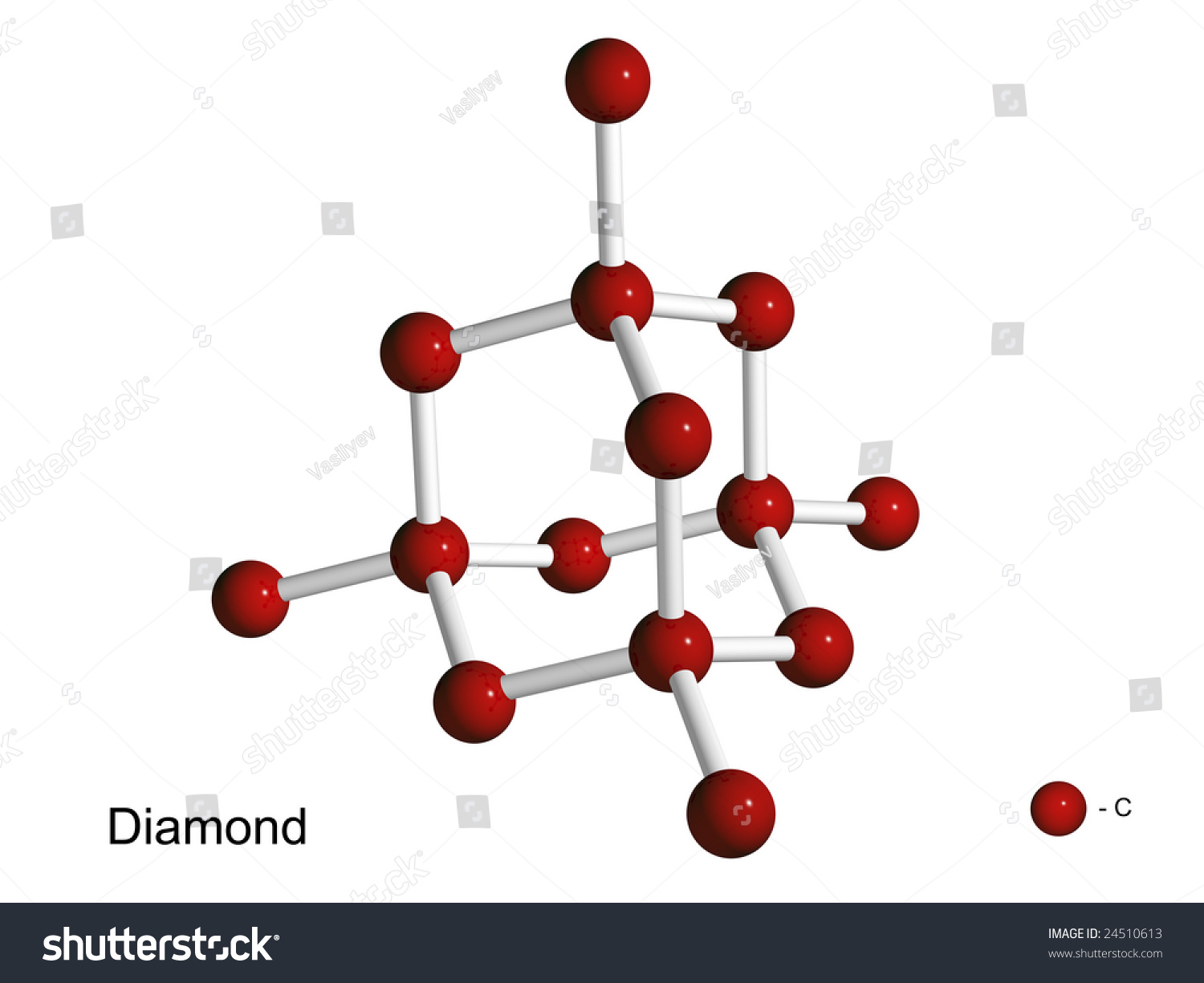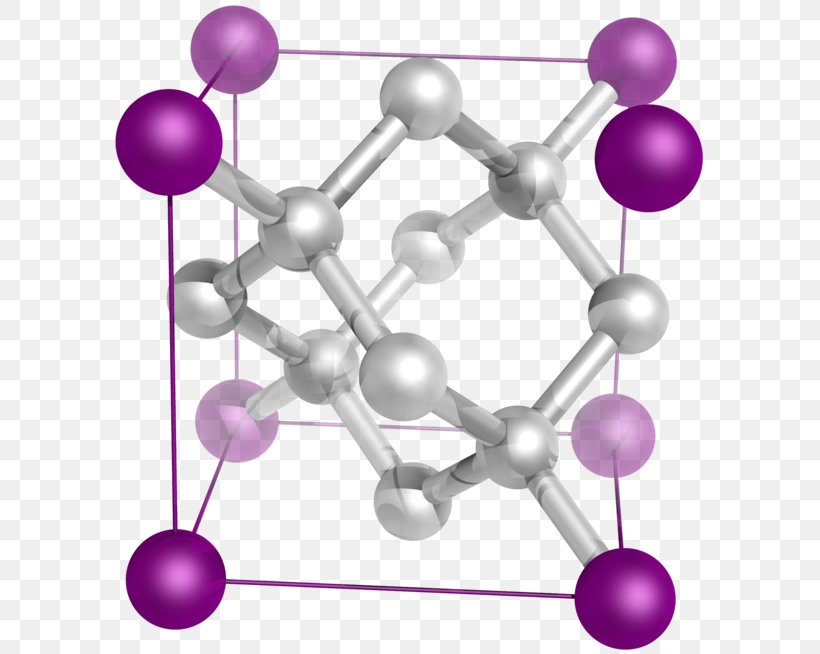
1. a) The crystal structure of diamond and zinc blende (ZnS). b) The... Download Scientific
An alternative approach, used with continued success to unlock the use of diamond for semiconductor applications, has been that of 'surface transfer doping' - a process by which intrinsically insulating diamond surfaces can be made semiconducting without the need for traditional impurity doping.

FIG. S2. (a) Zincblende lattice diamond lattice with ±m... Download Scientific Diagram
The lattice constant a= 3:57 A (at room temperature) is the length of the side of the cube in the FCC pattern. The elementary lattice translations are e 1 = a 2 (0;1;1); e 2 = a 2 (1;0;1); e 3 = a 2 (1;1;0): (6) The unit cell contains two atoms. 2.3.4 Diamond Brillouin zone The dual lattice of kpoints is de ned as lattice of kvectors which give.

Volumetric Crystal lattice of diamond. The position of atoms in a crystal. Vector illustration
Although often called the diamond lattice, this structure is not a lattice in the technical sense of this word used in mathematics. Crystallographic structure Visualisation of a diamond cubic unit cell: 1. Components of a unit cell, 2. One unit cell, 3. A lattice of 3 × 3 × 3 unit cells

Structure Diamond Crystal Lattice Diamond Stock Vector (Royalty Free) 2169904053 Shutterstock
Keywords: diamond crystal, nanostructures, high pressure high temperature (HPHT), high resolutions electron microscopy. Suggested Citation: Suggested Citation Kulnitskiy, Boris and Blank, Vladimir and Kuznetsov, Mikhail and Nosukhin, Sergei and Terentiev, Sergey, The Effect of Boron on the Structure and Lattice Parameters of Diamond Single Crystals.

14K Diamond Lattice Ring Rings RRING34144 The RealReal
Diamond, displaying a completely sp 3 hybridization, is a typical atomic crystal. The lattice constant is 3.57 Å, and the C-C bond is 1.54 Å. The crystal structure is shown in Figure 1. Each unit cell contains eight carbon atoms, and the C-C bond is strong covalence bond.

Bulk Crystal structure model diamond lattice (diameter 30mm) free shippingin Educational
Diamond is the allotrope of carbon in which the carbon atoms are arranged in the specific type of cubic lattice called diamond cubic.It is a crystal that is transparent to opaque and which is generally isotropic (no or very weak birefringence).Diamond is the hardest naturally occurring material known. Yet, due to important structural brittleness, bulk diamond's toughness is only fair to good.

Diamond Lattice
The crystal structure of a diamond is a face-centered cubic or FCC lattice. Each carbon atom joins four other carbon atoms in regular tetrahedrons (triangular prisms). Based on the cubic form and its highly symmetrical arrangement of atoms, diamond crystals can develop into several different shapes, known as 'crystal habits'.

Solved What is the lattice and basis for the diamond
C (diamond) is the prototype for DC. The Diamond Cubic (DC) unit cell can be imagined as a cube with an atom on each corner, each face, and the (¼, ¼, ¼), (¾, ¾, ¼), (¼, ¼, ¾), and (¼, ¾, ¾) positions. DC has 8 atoms per unit cell, lattice constant a = 8R/√3, Coordination Number CN = 4, and Atomic Packing Factor APF = 34%. Outline

Diamond Lattice Image & Photo (Free Trial) Bigstock
Small numbers of defects or impurities (about one per million of lattice atoms) color diamond blue (boron), yellow (nitrogen), brown (defects), green (radiation exposure), purple, pink, orange, or red. Diamond also has a very high refractive index and a relatively high optical dispersion .

Band structure of diamond lattice figure
In Figure 3.5a the first BZ is depicted. It has a volume of [].. Due to the translational invariance of the lattice the wave functions and the energy bands are periodic in the reciprocal space and it is sufficient to consider only the first BZ for band structure calculations [].The diamond structure is invariant not only under translations, but also under several other symmetry operations such.

The relation between lattice constant a and atomic radius r for Diamond Cubic Crystal Structure
Diamond is composed of the single element carbon, and it is the arrangement of the C atoms in the lattice that give diamond its amazing properties. Compare the structure of diamond and graphite, both composed of just carbon.

PPT 3Dimensional Crystal Structure PowerPoint Presentation, free download ID374386
AQA Giant covalent molecules - AQA Diamond and graphite Giant covalent substances have many atoms joined together by covalent bonds. Diamond, graphite and graphene are forms of carbon with.

Isolated 3d Model Of A Crystal Lattice Of Diamond On A White Background Stock Photo 24510613
The crystal structure of diamond is equivalent to a face-centred cubic (FCC) lattice, with a basis of two identical carbon atoms: one at (0, 0, 0) and the other at (1/4, 1/4, 1/4), where the coordinates are given as fractions along the cube sides. This is the same as two interpenetrating FCC lattices, offset from one another along a body.

The diamond lattice as the densest possible sphere packing of... Download Scientific Diagram
Diamond is a crystal structure with a face centered cubic Bravais lattice and two atoms in the basis. Carbon, silicon germanium, and α-tin form this crystal structure. Crystal structure: Diamond Bravais lattice: face centered cubic Space group: 227 (F d -3 m), Strukturbericht: A4, Pearson symbol: cF8

Crystal System Bravais Lattice Diamond Cubic Crystal Structure, PNG, 600x654px, Crystal System
GCSE OCR Gateway Properties of materials - OCR Gateway Diamond and graphite Carbon atoms can form four covalent bonds. This lets it form many different organic substances, and to exist as.

Diamond Crystal Structure, Carbon Lattice Stock Photo Alamy
The cubic lattice is the most symmetrical of the systems. All the angles are equal to 90°, and all the sides are of the same length (a = b = c).Only the length of one of the sides (a) is required to describe this system completely.In addition to simple cubic, the cubic lattice also includes body-centered cubic and face-centered cubic (Figure \(\PageIndex{1}\).